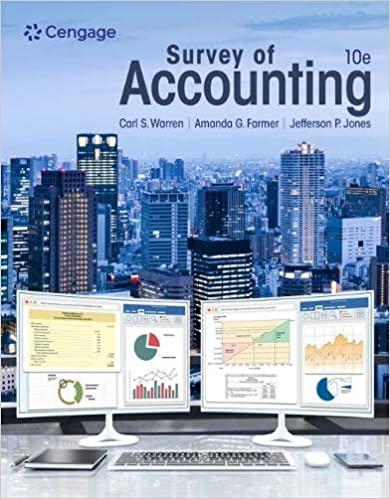Question
1.Explain the differences between managerial accounting and financial accounting. 2.Identify the different types of product and non-production costs and give examples for each. 3.Define and
1.Explain the differences between managerial accounting and financial accounting.
2.Identify the different types of product and non-production costs and give examples for each.
3.Define and graph fixed, variable, mixed, and step costs.Give 3 examples of each type of cost (only one example of step costs).
4.Differentiate between functional based costing and activity based costing.
5.Define budgeting and discuss its role in planning, control, and decision-making.Describe the behavioral dimensions of budgeting.
6.Explain how unit standards are set and why standard cost systems are adopted.
7.Discuss the difference between static and flexible budgets.Why are flexible budgets superior to static budgets for performance reporting? Explain the purpose of a before-the-fact flexible budget and an after-the-fact flexible.
8.Explain decentralization and why firms choose to decentralize.
9.Define the Balanced Scorecard and the four sections.The Balanced Scorecard was developed to overcome what shortcoming?
10.Distinguish between independent and mutually exclusive capital investment decisions.Explain why NPV (Net Present Value) is generally preferred over IRR (Internal Rate of Return) when choosing among mutually exclusive projects.
 MBA 5130 Final Exam 1. Explain the differences between managerial accounting and financial accounting. 2. Identify the different types of product and non-production costs and give examples for each. 3. Define and graph fixed, variable, mixed, and step costs. Give 3 examples of each type of cost (only one example of step costs). 4. Differentiate between functional based costing and activity based costing. 5. Define budgeting and discuss its role in planning, control, and decisionmaking. Describe the behavioral dimensions of budgeting. 6. Explain how unit standards are set and why standard cost systems are adopted. 7. Discuss the difference between static and flexible budgets. Why are flexible budgets superior to static budgets for performance reporting? Explain the purpose of a before-the-fact flexible budget and an after-the-fact flexible. 8. Explain decentralization and why firms choose to decentralize. 9. Define the Balanced Scorecard and the four sections. Scorecard was developed to overcome what shortcoming? The Balanced 10. Distinguish between independent and mutually exclusive capital investment decisions. Explain why NPV (Net Present Value) is generally preferred over IRR (Internal Rate of Return) when choosing among mutually exclusive projects
MBA 5130 Final Exam 1. Explain the differences between managerial accounting and financial accounting. 2. Identify the different types of product and non-production costs and give examples for each. 3. Define and graph fixed, variable, mixed, and step costs. Give 3 examples of each type of cost (only one example of step costs). 4. Differentiate between functional based costing and activity based costing. 5. Define budgeting and discuss its role in planning, control, and decisionmaking. Describe the behavioral dimensions of budgeting. 6. Explain how unit standards are set and why standard cost systems are adopted. 7. Discuss the difference between static and flexible budgets. Why are flexible budgets superior to static budgets for performance reporting? Explain the purpose of a before-the-fact flexible budget and an after-the-fact flexible. 8. Explain decentralization and why firms choose to decentralize. 9. Define the Balanced Scorecard and the four sections. Scorecard was developed to overcome what shortcoming? The Balanced 10. Distinguish between independent and mutually exclusive capital investment decisions. Explain why NPV (Net Present Value) is generally preferred over IRR (Internal Rate of Return) when choosing among mutually exclusive projects Step by Step Solution
There are 3 Steps involved in it
Step: 1

Get Instant Access to Expert-Tailored Solutions
See step-by-step solutions with expert insights and AI powered tools for academic success
Step: 2

Step: 3

Ace Your Homework with AI
Get the answers you need in no time with our AI-driven, step-by-step assistance
Get Started


